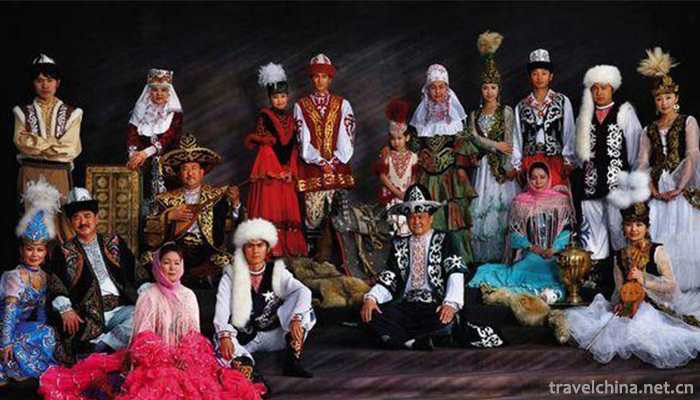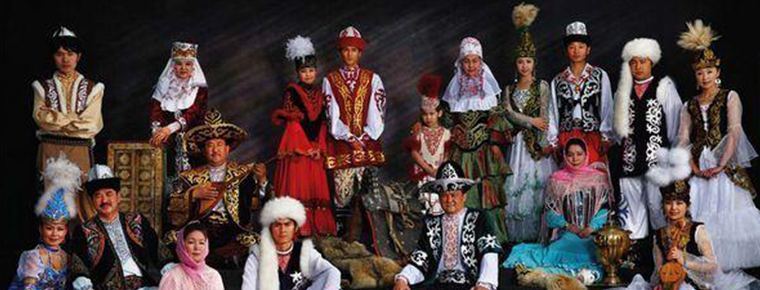Kazakh medicine
Kazakh medicine
Kazakhs are an ancient people.
Since the pre-Qin Dynasty, the Kazakh people have multiplied and lived in the vast grasslands and some agricultural areas in Northwest China. They have accumulated rich medical experience in production practice and life, as well as prescriptions for treating diseases with plants, animals, minerals and chemicals, which have played a positive role in the health care of the Kazakh people.
Kazakh people deeply understand the significance of physical health. Kazakh people have many proverbs and proverbs about the meaning of physical health. For example, "The most precious wealth is physical health." To be healthy, we must pay attention to hygiene. Therefore, Kazakhs often say, "Physical health is a great wealth. The condition of health is hygiene. The people of Kazakhstan pay attention to the cleanliness of clothes and the hygiene of tableware. They have long developed the fine traditional habit of washing hands before meals, after tea and after urine and urine.
Kazakhs pay special attention to disease prevention. Therefore, the Kazakh people pay attention to the hygiene of food, select the food that is suitable for their appetite, and there are many proverbs to prevent diseases. For example, "abdominal pain, fasting must be avoided", "eye pain should be prohibited to rub eyes with hands", "lawsuits can not be ignored, disease can not be underestimated." Wait. Kazakh folk doctors have been used to treat diseases for a long time. Folk doctors are generally divided into two categories: one is called Yemushi (a folk doctor who uses herbal medicine to treat diseases), the other is called Utashi (a folk doctor who specializes in fracture). These folk doctors have relieved people's pain by combining home visits with outpatient visits, and they are very popular and respected by the people.
The medicines of Kazakh folk doctors come from all kinds of plants and animals: skin and meat of birds, such as kidney, gall, musk, deer antler, umbilical intestine, brain of snow chicken, etc. and mineral chemicals, such as white sand, alum, sulphur, alum, mercury, calomel and mercury, in addition to milk and various fruits.
Kazakh folk doctors (Ye Mushi) diagnose the disease mainly by examining the pulse, looking at the eyes, and looking at the tongue. Some people do not tell the doctor the symptoms of the disease beforehand. Doctors who can accurately diagnose the patient's condition by medical skill are considered to be wise doctors. This kind of doctor is most respected by the people. People usually look for this kind of doctor to see a doctor and take medicine.
Kazakh folk doctors generally treat rheumatoid arthritis, typhoid fever, cold and other diseases through sweat-inducing therapy. That is to say, people with this kind of disease, let him or her lie down and sweat with fresh sheepskin, goat skin or horseskin, or bury his or her lower body in the feverish dung heap, there are also ways to cure the disease by roasting a fire cage hole. For scurvy and jaundice patients, they are treated with blood-activating drugs, blood-clearing drugs or other methods.
Non-governmental doctors usually use mercury to treat tumors, or calomel to treat tumors. They think that general oncology and osteochondriasis are hereditary diseases.
Diseases caused by meals or stomach acidosis can be treated by taking herbs, vomiting or diarrhea.
Patients with pulmonary hydatid, tuberculosis and dermatosis are treated with calomel, opium, jarosite, mercury and sulfur. Kazakh folk doctors, with special emphasis on avoiding viral infection, pay great attention to the elimination of viruses, often say: "In addition to fracture, other diseases will be transmitted."
Utardai (orthopaedic surgeon in modern language) also has excellent medical skills. Because Kazakh people often train horses and ride horses on the rugged and dangerous mountain goat intestinal trails, they often suffer from horse fracture or bone dislocation, while Kazakh Utardai (orthopaedic surgeon) is quite skilled in the treatment of fracture and dislocation. They are very familiar with human structure and bone parts, blood, muscles and so on. Their dressing techniques are also quite skillful. They can even treat the patients with fracture and skeleton deformity a few years ago. They can use horse foal oil to dress the fracture to make the bone soft and heal again, so that the fracture patients can recover safely and healthily.
Since ancient times, Kazakh people engaged in animal husbandry have rich herding experience and veterinary knowledge. Kazakh folk veterinarians are more numerous and skilled.
In the past, the main food of Kazakhs was meat. Because Kazakh people often slaughter livestock, they know the physical structure and physiological function of livestock very well. In their long-term grazing practice, they learned about common diseases and seasonal diseases, frequently-occurring diseases and regional diseases of livestock, and accumulated rich veterinary knowledge and exquisite technology. Kazakh folk veterinarian father and son passed down from generation to generation, there are many secrets, prescriptions, unilateral curative effect is particularly good.
Kazakh folk veterinarians, in addition to taking a variety of drugs for livestock, also use surgical treatment and other methods, have a very high curative effect. If the wound on horseback is excised with knife, and the wound is washed with medicated water, the therapeutic effect is excellent.
Common diseases of horses, such as osteophthalmopathy, horse hernia gangrene, camel's double umbilical cord disease and bowel knot, are often treated by surgical methods. Epidemic lymphangitis and other diseases are also treated by surgical methods. Folk veterinarians often treat animal fracture, bone dislocation and other diseases by bandaging, which is quite skilled.
Unfortunately, the Kazakh people's abundant medical skills and various medicinal prescriptions have not been written into systematic monographs, and the famous Kazakh medical skills of the past dynasties have not been systematically summarized, which needs to be carried out in the future.


-
1.Shanghai Century Park
Century Park, formerly known as Pudong Central Park, is a relatively large park in Pudong area, covering 140.3 hectares. It is located in the southeast of Pudong Huamu
Time 2018-12-19 -
2.Lingyun Mountain Scenic Area
Lingyun Mountain Scenic Spot is located in Gaoping District of Nanchong City, with an area of 20 square kilometers and a total investment of 300 million yuan. The scenic spot is dominated by Lingyun M
Time 2018-12-26 -
3.Xisha Wetland of Pearl Lake
Located in Luhua Town, west of Chongming Island, Shanghai Mingzhu Lake is the largest natural inland lake on the island. It is also the main area of western water recreation
Time 2019-02-07 -
4.Shenzhen Maritime Pastoral
Shenzhen Maritime Pastoral Tourist Area is administratively located in Shajing Street, Baoan District, Shenzhen City. It is located at the eastern port of Pearl River estuary
Time 2019-02-08 -
5.Wooden Fish Songs
Muyu song is short for Muyu, also known as Touyu song. It is one of the traditional rap and singing arts in Guangdong Province and belongs to the system of Tanci. It is popular in the Pearl River Delt
Time 2019-06-06 -
6.Pinghu cymbal book
Cymbals are a unique form of local traditional folk art in the Wu dialect area of Jiangnan. According to the Records of Songjiang County, it was formed in the Qing Dynasty (1821-1850). It is now mainl
Time 2019-06-09 -
7.Legend of the ancestors of Khitan
The legend of the ancestors of Qidan is a folk legend that is spread in Pingquan County, Hebei Province, China. According to legend, the ancestors of Qidan were born on the Futu River in Mayushan
Time 2019-06-10 -
8.Siping Opera
Siping Opera, also known as Sijuan Opera, Siping Opera, Sipeng Opera and Sipeng Opera, is popular in Pingnan County, Zhenghe County, Fujian Province. It is one of the national intangible cultural heri
Time 2019-06-16 -
9.Dyeing and Finishing Techniques of Xiangyun Yarn
Xiangyun yarn dyeing and finishing technology, the traditional handicraft of Shunde District, Foshan City, Guangdong Province, is one of the national intangible cultural heritage.
Time 2019-07-03 -
10.Yidege Ink Making Skills
Yidege is a local traditional handicraft in Beijing. It is well-known for producing ink. The products have bright ink, rich and light colors, fluent writing, moderate concentration, strong fragrance,
Time 2019-07-11 -
11.Zhoushan gongs and drums
Zhoushan gongs and drums are the representatives of traditional folk art in Zhoushan City, Zhejiang Province. They are based on gongs, drums, cymbals and clappers, with silk bamboo, magnificent sound
Time 2019-08-10 -
12.Da Yu
Yu, surnamed Si, is famous for his life. (Yu Yu is the name). History is called Da Yu and Emperor Yu. Xia Hou Shi Chieftain Xia Dynasty The founding king. Yu is Yellow Emperor Great grandson, Zhuan Gr
Time 2019-09-07